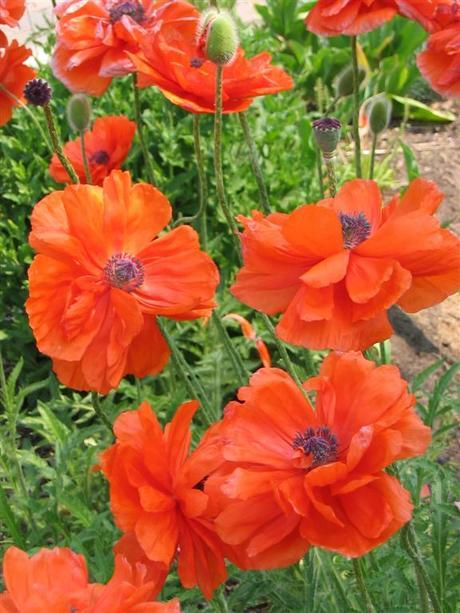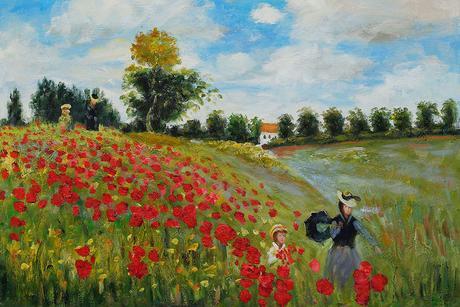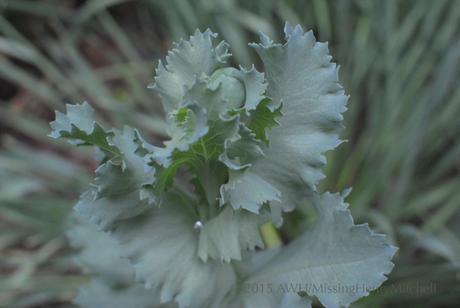If you read much gardening literature, you’ll eventually come across some plant for which the consensus seems to be that anyone can grow it, it’s totally foolproof, and yet you, no matter how hard you try, cannot get the job done.
For me, for the longest time, it was poppies.

Oriental Poppies, by Greenlamplady (Own work) [CC BY-SA 3.0 (http://creativecommons.org/licenses/by-sa/3.0)%5D, via Wikimedia Commons
I love poppies (Papaver sp., mostly). Their delicate petals and vibrant colors fill me with longing. Everything I read promised they were easy to grow. I even read about a local woman who bought a sackful of breadseed poppy seeds from the bulk bin at the local market and threw them out into her garden, and next year her side yard looked like Giverny.
Claude Monet [Public domain], via Wikimedia Commons. Poppy Field in Argenteuil, by Claude Monet. {{PD-1923}} – published before 1923 and public domain in the US.
I tried the same technique and discovered that lady must be holding something back. I tried different varieties–Oriental poppies (P. orientale), breadseed (P. somniferum), Welsh poppies (Meconopsis cambrica), California poppies (Eschscholzia californica), corn poppies (Papaver rhoeas), Icelandic poppies (Papaver nudicaule)–everything except the holy grail of poppies, the Himalayan blue, which, let’s face it, I wasn’t ready for. I tried direct seeding in fall, in spring, I tried transplanting–failure after failure. Some sources said they needed rich soil. I provided rich soil; nothing happened. Some sources said they grow in very poor soil. I began to despair.![The secret to growing poppies By Photo by and (c)2008 Derek Ramsey (Ram-Man). Co-attribution must be given to the Chanticleer Garden. (Self-photographed) [GFDL (http://www.gnu.org/copyleft/fdl.html) or CC-BY-SA-3.0 (http://creativecommons.org/licenses/by-sa/3.0/)], via Wikimedia Commons.](https://m5.paperblog.com/i/121/1217781/the-secret-to-growing-poppies-L-XQLKM0.jpeg)
Himalayan blue poppy, photographed at Chanticleer Garden, Wayne PA, USA. Photo by and (c)2008 Derek Ramsey (Ram-Man). Co-attribution must be given to the Chanticleer Garden. (Self-photographed) [GFDL (http://www.gnu.org/copyleft/fdl.html) or CC-BY-SA-3.0 (http://creativecommons.org/licenses/by-sa/3.0/)%5D, via Wikimedia Commons.
Last year, a gardening friend, Catherine, shared her secret:How to grow poppies from seed
- Find your sunny spot where you want your poppies to grow, and lay out a bed of compost about 1-2″ thick.
- Smooth it over a bit with the back of the rake.
- Scatter your poppy seeds in the compost.
- Tamp them in gently with the back of the rake.
- Walk away.
They don’t need watering, except what Mother Nature will bring.
Well, Catherine did not fail me. Barring a tornado, hurricane, or direct lightning strike to the spot, I am about to witness the bloom of my first poppy ever.

I don’t know what it’s going to be. I’ve scattered in Hungarian blue breadseed poppies, ‘Lauren’s Grape,’ and a locally sourced mix of pinks, purples, and whites.
Timing your seeding seems to be very important as well. These were sown about the first week of November. I sowed some more in December and those are coming along, but are quite small. Perhaps the advent of summer tropical weather will hasten their growth.
I tell you, I’m anticipating this flower like the British press anticipated the first peek at Princess Charlotte. It will probably suffer sunburn from camera flashes once it does appear.
Hurrah!

